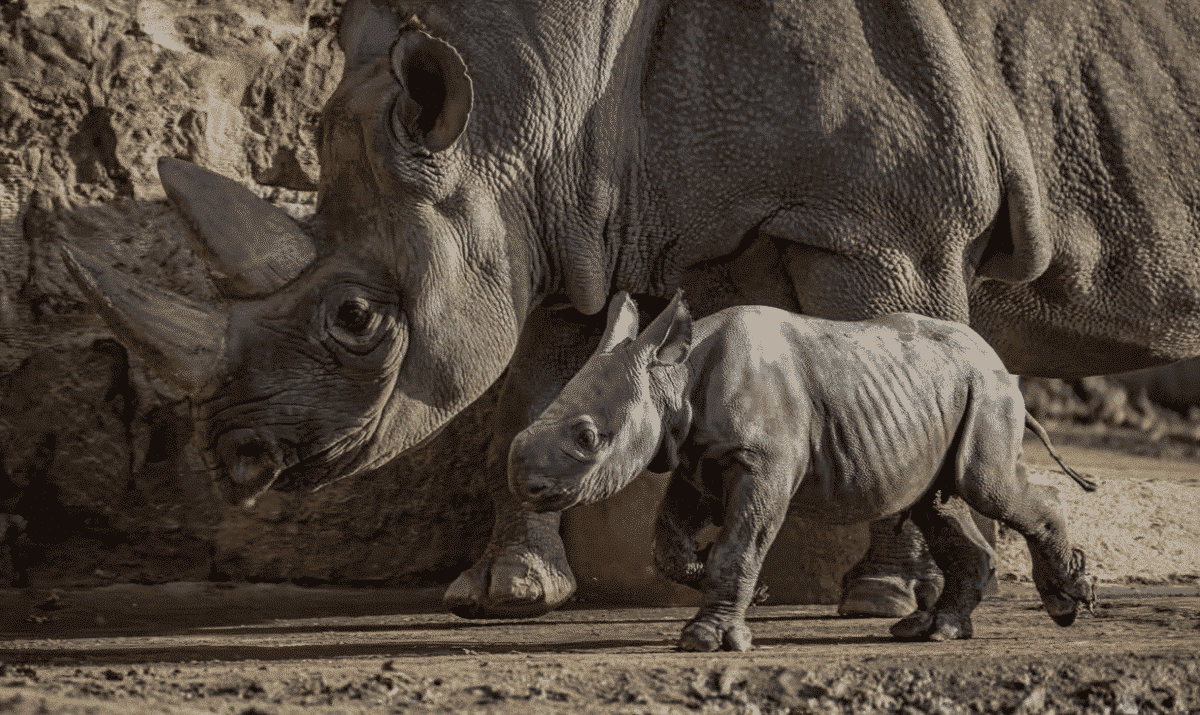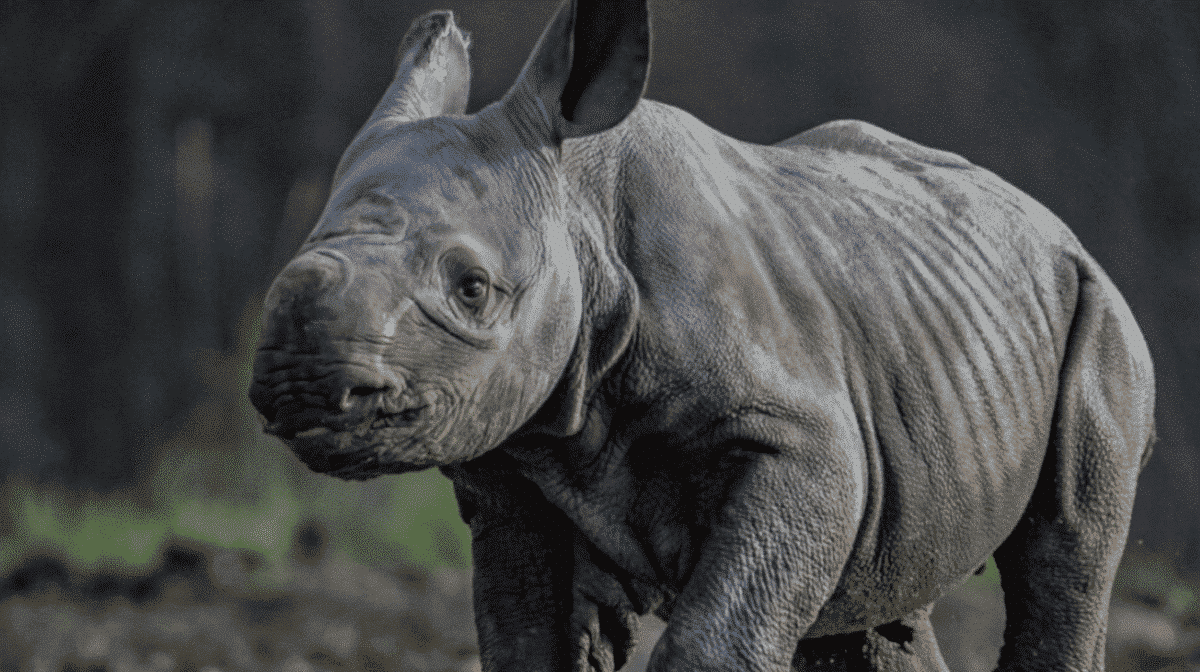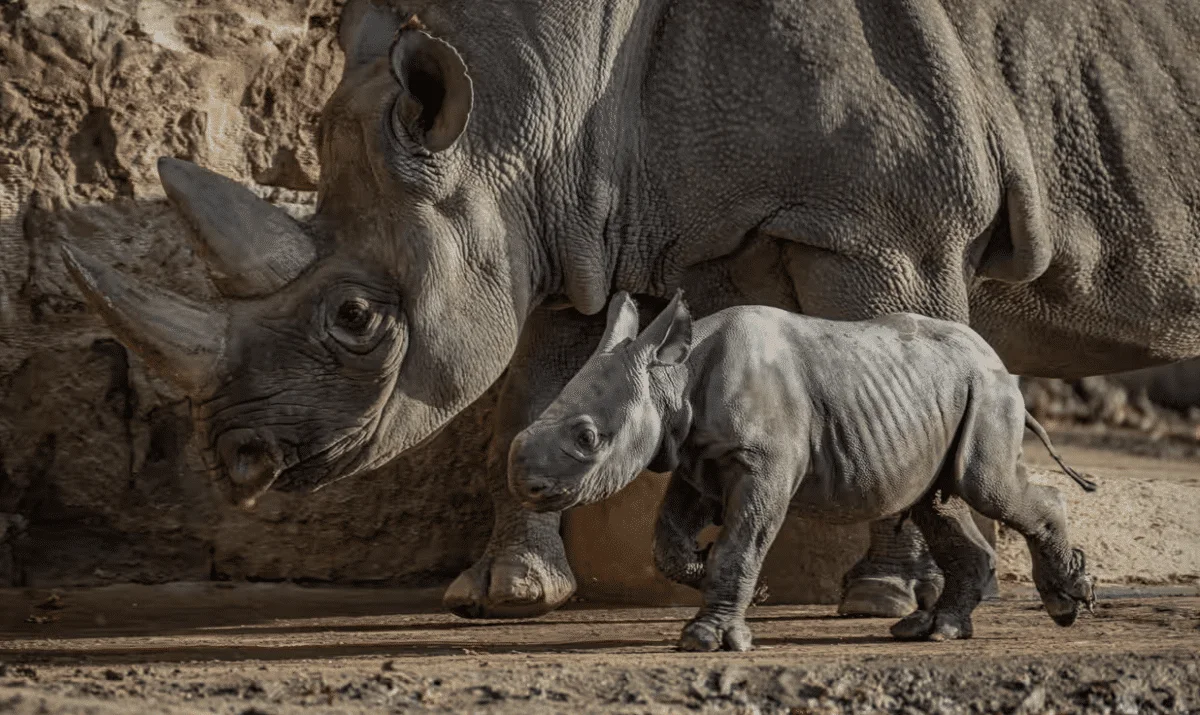With only 600 left in the wild, black rhinos are on the brink of extinction, meaning a birth is a vital step in the right direction. Born on 12 November at 2:45 pm, this phenomenon occurred in Chester Zoo, England, a leading animal park boasting 27,000 animals, of which black rhinos are the most threatened.

During the early 20th century, there used to be over 100,000 roaming freely across Africa, a figure which collapsed to 2,300 in the 1990s and continued to fall as rising ivory prices correlated to an increase in poaching attacks. Overall, their population has declined by a head-scratching 95%.
Compared to a few centuries ago, only a handful are left, prompting the International Union for the Conservation of Nature (IUCN) to list them as critically endangered – a distressing label given to animals who are unlikely to survive.
Watch The Calf’s First Day
After 15 long and nail-biting months, Zuri, the mother, gave birth to the unnamed calf in the middle of a day, an uncommon time for black rhinos to give birth, as it predominantly occurs under the stars, but meant the rare phenomenon could be recorded.

Emma Envision, Chester Zoo’s Rhino Team manager, proudly announced that the newly born calf is in high spirits, eating well, and inseparable from its mother – sounds like my early few days of life, apart from the initial two.
Black Rhino Habitat and Range
In the expansive landscapes of Africa, the black rhinoceros (Diceros bicornis) stakes its claim across diverse terrains. From Namibia’s arid expanses to Kenya’s lush plains, these resilient creatures navigate grasslands, savannas, and dense forests. Historically, their range spanned even broader, but the ever-encroaching threats of habitat loss and poaching have confined them to pockets of these countries. Their adaptability to various environments underscores the urgency of preserving these habitats to ensure the survival of this endangered species.
Dietary Habits of Black Rhinos
A closer look at the dietary habits of black rhinos reveals a fascinating aspect of their ecological role. Despite their robust size, these browsers are discerning eaters, selecting twigs, leaves, and branches from diverse vegetation. Their prehensile upper lip is a sophisticated tool for grasping and manipulating plant matter. From shrubs to trees, black rhinos contribute to the ecological balance by dispersing seeds and shaping the landscape. Understanding their dietary preferences is key to formulating effective conservation strategies encompassing habitat preservation and sustainable food sources.
Conservation Initiatives and the Road Ahead
In the face of relentless challenges, concerted efforts are underway to secure the future of black rhinos. Conservation organizations and wildlife reserves are implementing multifaceted strategies. These include habitat restoration projects to expand their living spaces and anti-poaching measures to combat the illicit trade of rhino horns. Community involvement is integral, fostering a harmonious coexistence between human populations and these magnificent creatures. As we tread into an era where the survival of black rhinos hangs in the balance, collaborative and adaptive conservation actions emerge as beacons of hope, paving the way for a sustainable cohabitation between mankind and one of Africa’s most iconic species.
Join our Forum for free today!

- Elderly Man Kills Grizzly Bear in Montana - July 22, 2024
- Missing Cat Found Weeks Later, 40 Miles Away - July 21, 2024
- The Fastest Animal on Earth: So, How Quick Are Cheetahs? - July 21, 2024


